Epona – One Of The Oldest And Widely Known Celtic Deities
A. Sutherland - AncientPages.com - Epona is the Gaulish goddess of horses, donkeys, and mules. She was one of the oldest and most notable Celtic deities and was worshiped in ancient Rome.
Her name, 'Epona,' means 'mare,' and she was believed to be the protector of horses, donkeys, mules, and ponies.
A relief of the Gaulish horse goddess Epona from Salonica, Greek Macedonia, 4th century CE. Image via Wikipedia
As involved in ancient beliefs of many cultures, some scholars do not exclude that this goddess was often associated with death, similar to other mother goddesses. In that case, her symbol was a crow, a raven, or a dog symbolizing the afterlife.
As the guide (or companion) of souls, leading the deceased to the land of the dead, Epona had a mysterious key to opening the underworld (otherworld).
No doubt, Epona was a very popular deity in the Roman Empire, but as we said, she was not of Roman origin, for there were no such equestrian goddesses in the pantheon of these people. The Roman army adopted her worship and spread her cult throughout the empire. She was the only Celtic goddess granted a feast day (December 18).
Bas-relief of the Romano-Celtic goddess Epona, from Contern (Luxembourg), 2nd or 3rd century AD. Image credit: Owen Cook - CC BY-SA 4.0
The greatest concentration of inscriptions to Epona, along with altars and depictions of her, have been found in Roman Gaul, especially in Burgundy, and in the Metz-Trier and Meuse valley regions of Germany, Britain, Bulgaria, and North Africa as well.
In Celtic Gaul, Epona was initially associated with the beliefs of the tribe of Aedui, who inhabited the regions between Liger (Loire, the longest river in France) and Arar (the modern Saone river of eastern France).
In historical records, these people were remembered as allies of Rome, who in time supported Vercingetorix, a brave warrior who gathered an army of Gallic people against the Roman Empire and in 52 BC was defeated by Julius Caesar. At the same time, the Aeduians were incorporated into Roman Gaul.
Despite Epona's wide popularity in ancient times, very little is known about her. Many believe this goddess had many local incarnations and appeared under other names.
The motif of the "Lady of the Animals" lives on this religious depiction. Flanked by two horses, Epona is shown sitting on a throne holding a fruit basket on her lap. The Celtic goddess was revered as the patroness for wagoners. She was also popular among the military. The images was mainly occurred in the provinces of Gaul and Germania. Image credit: Rosemania - Flickr
However, there is one interesting mythological story about when our planet Earth was almost empty. There were no gods or humans, only the sea and the land. When the sea met the ground, a white mare, Eiocha, made of sea foam, was born.
In the vicinity of this critical event, a strong oak tree grew, giving support to "a plant with white berries of "foam tears" from the sea. The white mare, Eiocha, ate the berries and grew heavy with the child. She gave birth to the first god, Cernunnos. The birth was painful, and in her struggle, Eiocha ripped pieces of bark from the oak tree and threw them into the sea, thus creating the Giants of the Deep. Cernunnos was lonely and coupled with Eiocha to produce other gods: Maponus, Tauranus, Teutates, and the goddess Epona." 1
Horses for the Celts were vital because they were used for transport. In war and agriculture, it is only natural that the cult of the goddess - patroness of horses- constituted an essential part of their religious views. She was usually depicted on a horse, feeding a horse from her hand, leading two horses, or standing with horses around her.
Other attributes were a horn of plenty and a loaf of bread, which means she was also worshiped as a fertility goddess.
Written by – A. Sutherland AncientPages.com Staff Writer
Updated on January 30, 2023
Copyright © AncientPages.com All rights reserved. This material may not be published, broadcast, rewritten or redistributed in whole or part without the express written permission of AncientPages.com
Expand for references- Hourly History, Celtic Mythology
Green, Miranda. The Gods of Roman Britain.
Ross, Anne. Pagan Celtic Britain
More From Ancient Pages
-
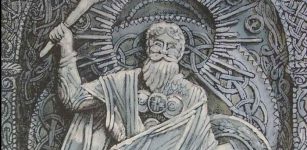 Veles And Perun: Most Powerful Slavic Gods In Conflict Between Powers Of Light And Darkness
Featured Stories | Jun 26, 2017
Veles And Perun: Most Powerful Slavic Gods In Conflict Between Powers Of Light And Darkness
Featured Stories | Jun 26, 2017 -
 Exceptionally Long-Lived Ancient Form Of Hydraulic Engineering Unearthed In The Nile Valley
Archaeology | Jun 13, 2023
Exceptionally Long-Lived Ancient Form Of Hydraulic Engineering Unearthed In The Nile Valley
Archaeology | Jun 13, 2023 -
 Mysterious Ancient Giant Jars Made By An Unknown Civilization Discovered In India
Archaeology | Mar 30, 2022
Mysterious Ancient Giant Jars Made By An Unknown Civilization Discovered In India
Archaeology | Mar 30, 2022 -
 Khonsu: Enigmatic Egyptian Moon God, Healer, Protector And His Dark Side
Egyptian Mythology | Mar 12, 2019
Khonsu: Enigmatic Egyptian Moon God, Healer, Protector And His Dark Side
Egyptian Mythology | Mar 12, 2019 -
 King Geirrod Betrayed His Brother Agnar And Sent Him To Die But Justice Finally Prevailed
Featured Stories | Feb 14, 2024
King Geirrod Betrayed His Brother Agnar And Sent Him To Die But Justice Finally Prevailed
Featured Stories | Feb 14, 2024 -
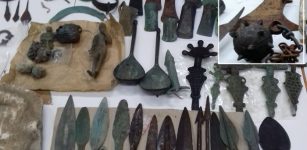 Illegal Journey Of 2,000 Historic Artifacts Hidden In Truck Under The Guise Of Parquet
Artifacts | Jan 3, 2021
Illegal Journey Of 2,000 Historic Artifacts Hidden In Truck Under The Guise Of Parquet
Artifacts | Jan 3, 2021 -
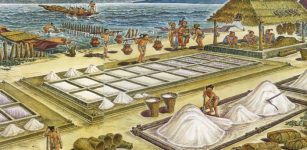 Ancient Maya Saltworks: Salt Was A Commodity Or Money In Classic Maya Economy
Archaeology | Mar 23, 2021
Ancient Maya Saltworks: Salt Was A Commodity Or Money In Classic Maya Economy
Archaeology | Mar 23, 2021 -
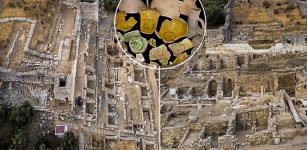 Cisterns Unearthed In Metropolis, Turkey Give Insight Into Daily Life Of Its Inhabitants 1,500 Years Ago
Archaeology | Jan 5, 2021
Cisterns Unearthed In Metropolis, Turkey Give Insight Into Daily Life Of Its Inhabitants 1,500 Years Ago
Archaeology | Jan 5, 2021 -
 On This Day In History: Vlad III Dracula Regained Throne Of Wallachia For The Third Time – On Nov 26, 1476
News | Nov 26, 2016
On This Day In History: Vlad III Dracula Regained Throne Of Wallachia For The Third Time – On Nov 26, 1476
News | Nov 26, 2016 -
 Why Did Ancient Romans Cut Off Their Thumbs?
Ancient History Facts | Mar 2, 2020
Why Did Ancient Romans Cut Off Their Thumbs?
Ancient History Facts | Mar 2, 2020 -
 On This Day In History: Earthquake In Pompeii, Italy Occurred – On Feb 5, 62 AD
News | Feb 5, 2017
On This Day In History: Earthquake In Pompeii, Italy Occurred – On Feb 5, 62 AD
News | Feb 5, 2017 -
 On This Day In History: ‘Sea King’ Ragnar Lodbrok Seizes Paris – On March 28, 845
News | Mar 28, 2017
On This Day In History: ‘Sea King’ Ragnar Lodbrok Seizes Paris – On March 28, 845
News | Mar 28, 2017 -
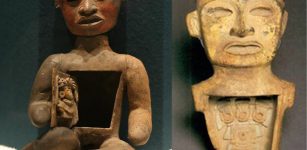 Mysterious Teotihuacan ‘Host’ Figurines From Metepec, Mexico
Artifacts | Jan 6, 2016
Mysterious Teotihuacan ‘Host’ Figurines From Metepec, Mexico
Artifacts | Jan 6, 2016 -
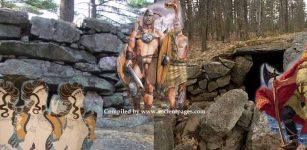 Riddle Of Mystery Hill: Who Built America’s Stonehenge?
Featured Stories | May 10, 2020
Riddle Of Mystery Hill: Who Built America’s Stonehenge?
Featured Stories | May 10, 2020 -
 Incredibly Well-Preserved 2,000-Year-Old Statue Of Greek God Hermes Found In Heraclea Sintica, Bulgaria
Archaeology | Jul 12, 2024
Incredibly Well-Preserved 2,000-Year-Old Statue Of Greek God Hermes Found In Heraclea Sintica, Bulgaria
Archaeology | Jul 12, 2024 -
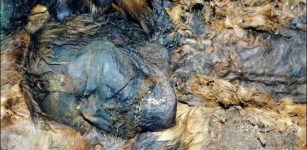 Discovered Near Arctic: Mysterious Lost Medieval Civilization And Puzzling Ancient Mummy
Archaeology | Jul 4, 2015
Discovered Near Arctic: Mysterious Lost Medieval Civilization And Puzzling Ancient Mummy
Archaeology | Jul 4, 2015 -
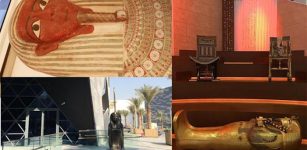 Ancient Coffin Of Priest Psamtik, Son Of Osiris And Five Replicas Of Goddess Maat Sent On Upcoming Expo
Archaeology | Oct 5, 2021
Ancient Coffin Of Priest Psamtik, Son Of Osiris And Five Replicas Of Goddess Maat Sent On Upcoming Expo
Archaeology | Oct 5, 2021 -
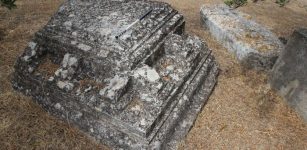 LIDAR Disovers 2,000-Year-Old Roman Temple Under Church In Danilo, Croatia
Archaeology | Dec 6, 2022
LIDAR Disovers 2,000-Year-Old Roman Temple Under Church In Danilo, Croatia
Archaeology | Dec 6, 2022 -
 On This Day In History: Supernova Observed In Constellation Lupus By Chinese And Egyptians – On May 1, 1006 AD
News | May 1, 2016
On This Day In History: Supernova Observed In Constellation Lupus By Chinese And Egyptians – On May 1, 1006 AD
News | May 1, 2016 -
 Unraveling The Mystery Of The Phoenix Bird – Symbol Of The Sun And Eternal Rebirth Of Life
Egyptian Mythology | Nov 6, 2023
Unraveling The Mystery Of The Phoenix Bird – Symbol Of The Sun And Eternal Rebirth Of Life
Egyptian Mythology | Nov 6, 2023



